[Kits For VORON 2.4 R2 Version] MKS Monster8 V2.0 Controller Kit with PI Run Klipper Firmware
[Kits For VORON 2.4 R2 Version] MKS Monster8 V2.0 Controller Kit with PI Run Klipper Firmware
Couldn't load pickup availability
Makerbase controller bundle for VORON 2.4 builder including a motherboard (MKS Monster 8), a microcomputer (MKS PI), a display screen (MKS PI-TS35), 10*TMC2209 stepper drivers, and USB cables.
| MKS Monster8 V2.0 | |
|---|---|
 |
- V2.0 MCU: STM32F407VET6 - Support for Voron V2.4 3D Printer - Support running Marlin firmware and Klipper firmware (requires a Klipper host such as Raspberry Pi or MKS PI) - Support U disk printing, support TMC driver UART mode. - Motor drive: the user can replace the motor drive by himself Support A4988, DRV8825, LV8729, TMC2208, TMC2209, TMC2225, TMC2226; - Supported LCD Display types: 1) Display screens that support LCD2004, LCD12864, MKS MINI12864 V1.0, MKS MINI12864 V3.0 2) Support the Makerbase Touch Screen, including: MKS TFT24, MKS TFT28, MKS TFT32, MKS TFT35, MKS H43; |
| MKS Pi | |
 |
- Onboard powerful 4-core 64-bit core SOC, with 1GBytes of DDR3 Memory; - Support HDMI screen interface, PI-TS35 screen interface; - Provide wired Ethernet port, 3-way USB interface (can be connected to 3D printer main control board, USB wireless network card, USB camera, U disk, USB keyboard and mouse, etc.); |
| MKS Pi-TS35 | |
 |
- Multiple color options to upgrade - Large SD card insert option - Side front matching more machines - Support EXP1 EXP2 interfaces - Multiplr motherboard combinations |
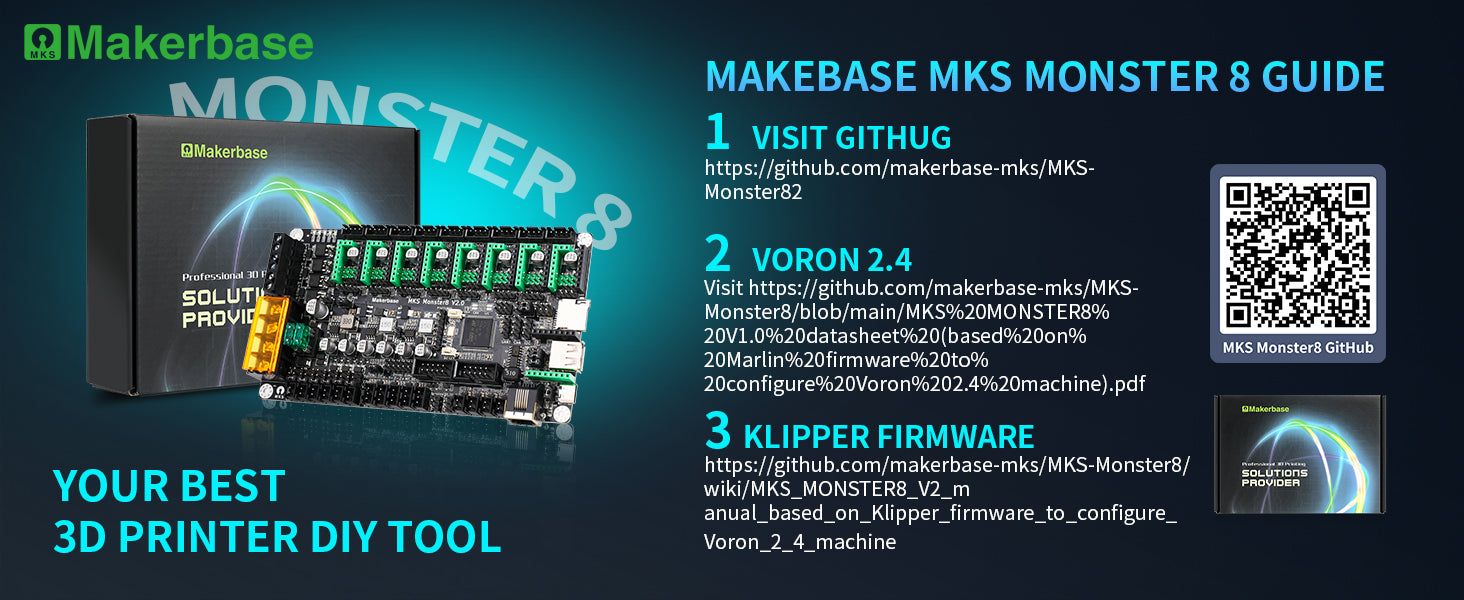
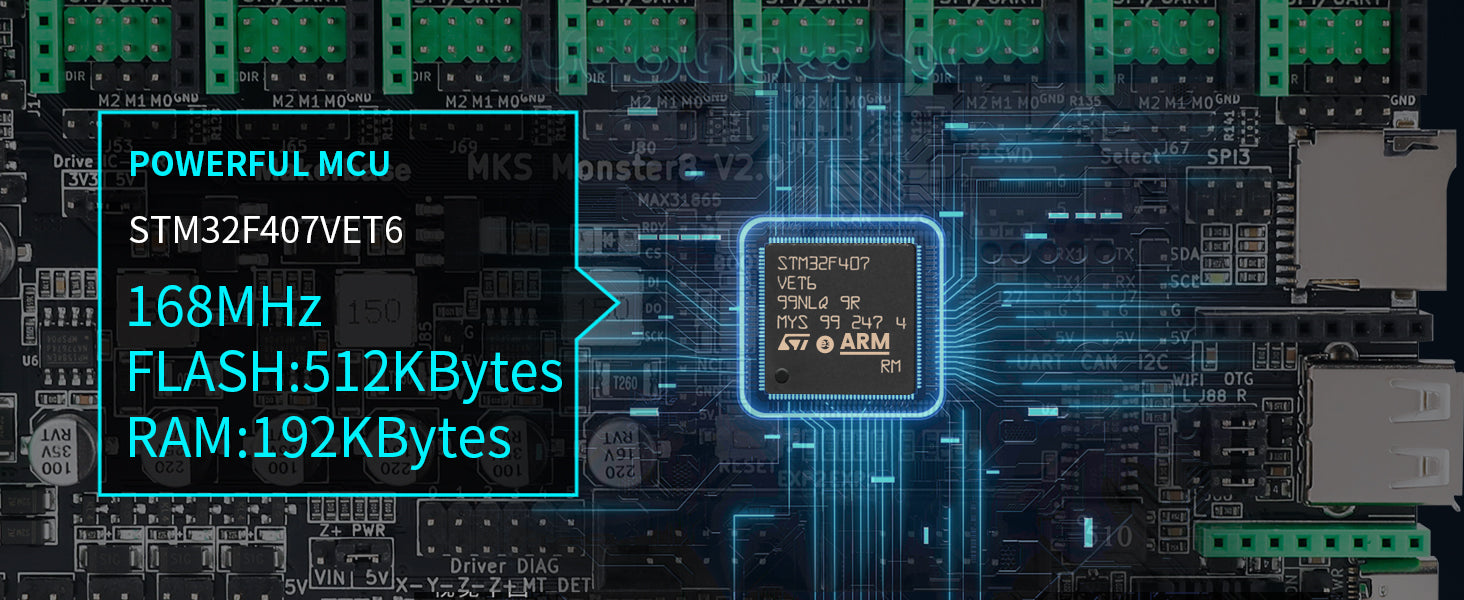
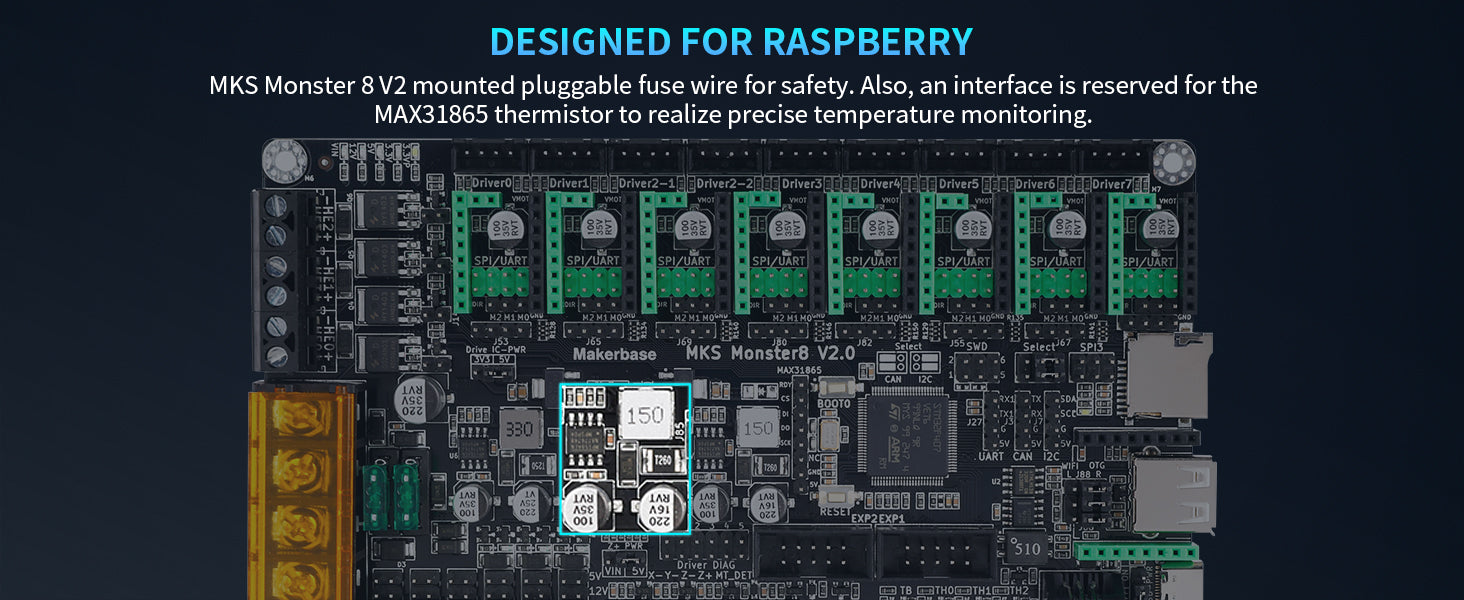
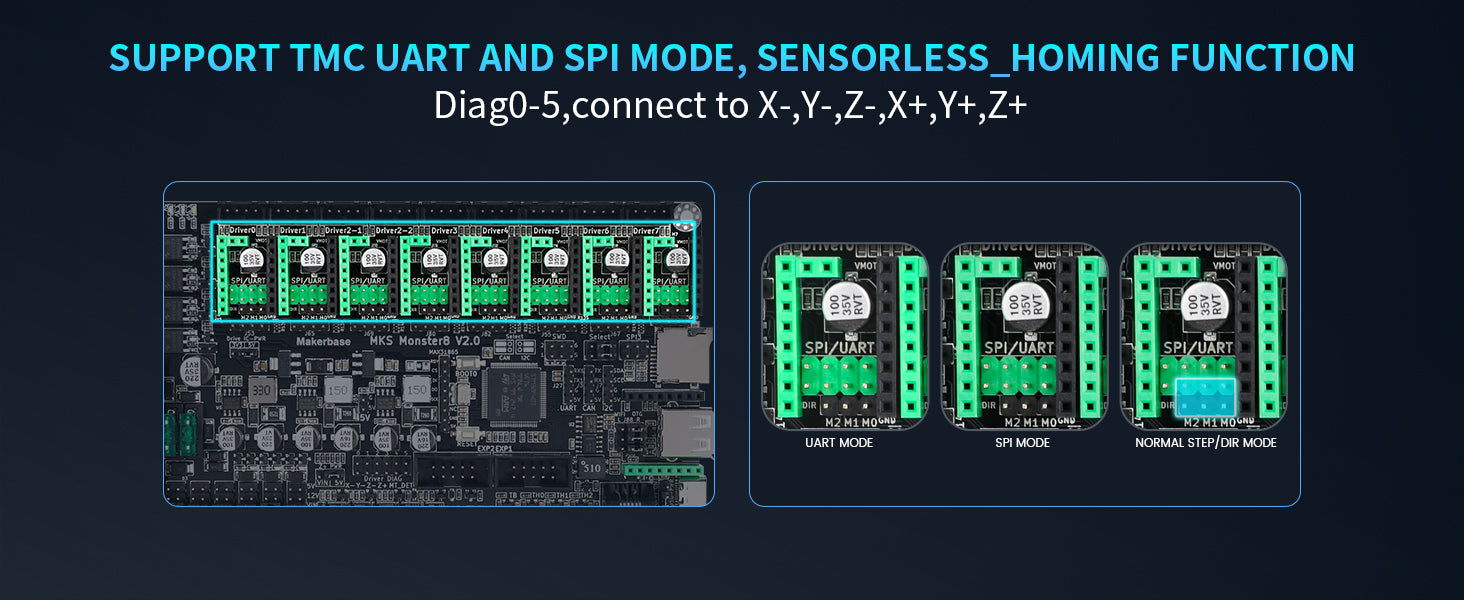
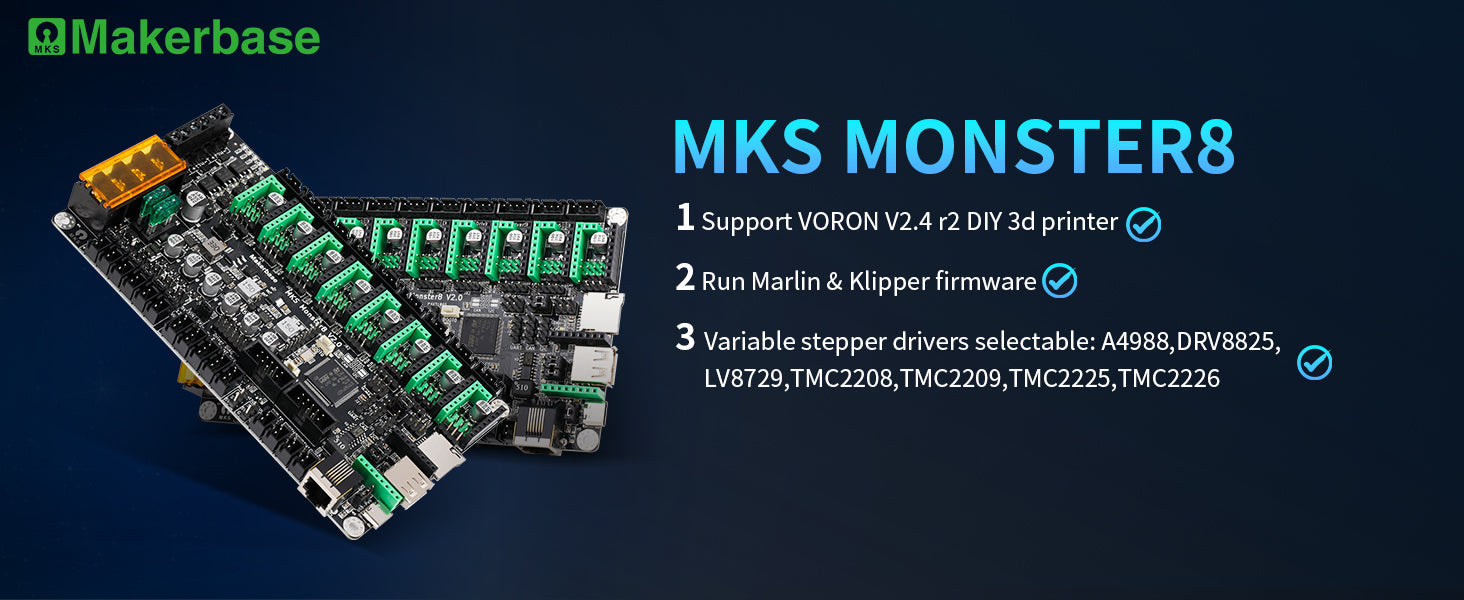


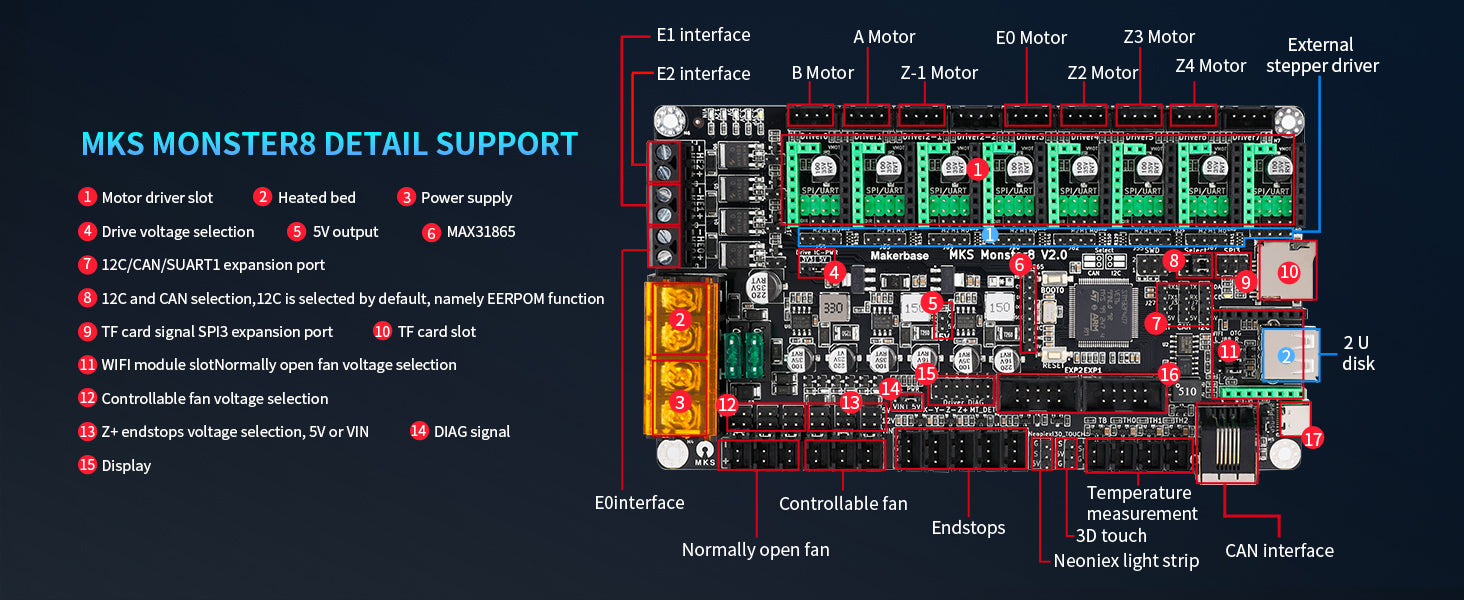






Share
![[Kits For VORON 2.4 R2 Version] MKS Monster8 V2.0 Controller Kit with PI Run Klipper Firmware](http://www.makerbase.store/cdn/shop/products/MakerbaseVoroncontrollerkit.jpg?v=1682403972&width=1445)
![[Kits For VORON 2.4 R2 Version] MKS Monster8 V2.0 Controller Kit with PI Run Klipper Firmware](http://www.makerbase.store/cdn/shop/files/Makerbase_mks_Monster_8_3d_printer_board_for_voron_2.4_1_1.jpg?v=1684739007&width=1445)
![[Kits For VORON 2.4 R2 Version] MKS Monster8 V2.0 Controller Kit with PI Run Klipper Firmware](http://www.makerbase.store/cdn/shop/files/mkspiwithPI35packaging_28518edf-ac9a-4402-810e-807f11dacc94.jpg?v=1684739007&width=1445)
![[Kits For VORON 2.4 R2 Version] MKS Monster8 V2.0 Controller Kit with PI Run Klipper Firmware](http://www.makerbase.store/cdn/shop/files/monster8wiring.jpg?v=1684739130&width=1445)
![[Kits For VORON 2.4 R2 Version] MKS Monster8 V2.0 Controller Kit with PI Run Klipper Firmware](http://www.makerbase.store/cdn/shop/files/mkspiwiring.jpg?v=1684739506&width=1445)
Q&A
What is a 3d printer Controller board for?
The Controller board, also known as the main board or motherboard, are PCBs that read and carry out the gcode by commanding motors and presume better printing experiences with many functions. Today, the most common add-ons by default include filament-run-out sensor, Power-off resume, auto-leveling sensor, expansion ports(12c, SPI, UART, CAN), etc...
What are the major elements of the Controller board?
1)MCU
2)Motor driver (slots)
3)Motor ports
4)Power supply interface
5)Hot-end/hotbed heater interface
6)Thermal runaway interface
7)End stop ports
8)Fan ports
9)Display port
10)TF/SD card slot
11)Communication ports(USB-C interface, WiFi, CAN, etc.)
What to look for in a Controller board before purchasing?
1)The first thing you should look at is the Processor. What is its Architecture (32-bit or 8-bit)? How fast could it proceed(Main Frequency, RAM) and how large could it storage (Flash size)?
2)Could you run Marlin/RepRap/Klipper on this board?
For details, check out MKS product database >>>
3)Number of a-xis
If your 3d printer have multiple extruders or z-axis motors, you need pay attention to the number of motor interfaces, motor driver slots, hot-end heater slots, hot-end thermal port, and limit-switch ports.
* Some MKS boards can share a stepper driver with 2 z-axis motors.
For details, check out MKS product database >>>
4)Stepper motor matters
Most MKS 3d printer boards are compatible with A4988, TMC2208/TMC2225, and TMC2209/TMC2226. If the board have external Stepper driver ports, you can connect stepper drivers of larger current such as TMC 2160-OC/TMC 2160-57.
5)Wired or wireless communication port or expansion
Does this board communicate in the way you favor? Does the board have USB Type-A port? USB Type-C port? Mini-USB port? Micro USB port? WiFi expansion?
For details, check out MKS product database >>>
6)Regular add-on
such as filament-run-out sensor, Power-off resume, auto-leveling sensor, expansion ports(12c, SPI, UART, CAN), etc...
For details, check out MKS product database >>>
Why some Controller boards don’t come along with stepper drivers?
Most makers prefer to choose the stepper drivers by themselves since stepper drivers are highly diversified for different needs of current, micro-stepping rate, silences, etc. Also, the cost plays an important role when choosing the stepper driver.




